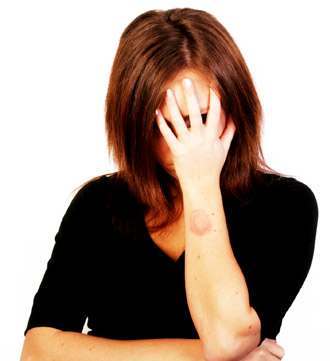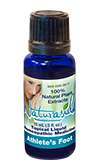
The Causes and Prevention of Ringworm
Ringworm is most common among children, but it can affect people of all ages. Ringworm isn’t caused by worms. It is a skin infection, also known as tinea, and it is caused by fungi called dermatophytes. Fungi are microscopic organisms that can live off the dead tissues on your skin, hair, and nails, much like a mushroom can grow on the bark of a tree. Ringworm is caused by a fungus that grows on the skin. Once the fungus is established, it spreads out in rings. The center of the ring may clear up, while a new ring of infection develops at the edge of the old ring. Children are the most likely to get ringworm. Ringworm of the scalp can spread from child to child when children share hats, combs, or brushes. Ringworm of the body can be spread through towels, clothing, or sports equipment. Personal hygiene is important in preventing the spread of ringworm. Dogs and cats can also be infected with ringworm, and they can pass it to people through direct contact.
The following are some signs of having ringworm:
Ringworm of the scalp: Dry, brittle hair or hair loss in patches, severe itching and a red-ringed patch of small blisters or scaly skin.
Ringworm of the body: Red-ringed patchs of small blisters or scaly skin and severe itching is sometimes present.
Consult your doctor if you have a red-ringed skin infection, severe itching of the skin or scalp, a scaly rash or hair loss.
There are five types of ringworm infections:
- Tinea cruris or jock itch is often seen in males. More specifically located between intertriginous folds of adjacent skin, which can be present in the groin or scrotum, and be indistinguishable from fungal infections caused by tinea.
- Tinea manuum, or tinea manus is a fungal infection on the hands. It is typically more aggressive than tinea pedis but looks similar. Itching, burning, cracking, and scaling may be observed and can be transmitted sexually or otherwise, whether or not symptoms are present.
- Tinea barbæ, also known as barber’s itch, ringworm of the beard, and tinea sycosis is a fungal infection of the hair. Tinea barbae is caused by a dermatophytic infection around the beard. Generally, the infection occurs as a follicular inflammation.
- Tinea corporis is a superficial fungal infection (dermatophytosis) of the arms and legs, especially on smooth skin. However, it may appear on any part of the body.
 Tinea capitis, also known as ringworm of the hair is a cutaneous fungal infection of the scalp. The disease is primarily caused by dermatophytes in the trichophyton and microsporum genera that invade the hair shaft.
Tinea capitis, also known as ringworm of the hair is a cutaneous fungal infection of the scalp. The disease is primarily caused by dermatophytes in the trichophyton and microsporum genera that invade the hair shaft.
Often, the diagnosis of ringworm is obvious because of its location and appearance. Otherwise, skin scrapings for microscopic examination and a culture of the affected skin can establish the diagnosis of ringworm. Home remedies cannot cure ringworm. To cure ringworm, it is necessary to take antifungal medications. Ringworm can be treated topically with external applications or systemically. For example, with oral medications.
You can also take steps to prevent ringworm infections from spreading. Do not share clothing, towels, hairbrushes, combs, hair accessories, sports gear, or other personal-care items. Wearing sandals or shoes in gyms, locker rooms, and at pools can help reduce your chances of contracting athlete’s foot.
You should avoid touching pets that have signs of ringworm, which are typically bald spots. Always take care to wash your hands after touching pets.
TOP 5
ATHLETE'S FOOTTreatments |
|||||
| Athlete's Foot Clear | Naturasil | Healing Natural Oils | Forces of Nature | DeSensua | |
|---|---|---|---|---|---|
| 1 | 2 | 3 | 4 | 5 | |
| Price (1 bottle) Price (6 bottles) *Best Value |
$49.95 $139.80 |
$31.30 $169.00 |
$29.95 $161.73 |
$34.85 $188.00 |
$23.99 $129.55 |
| Overall Rating | 99.30% | 82.20% | 79.40% | 74.80% | 66.30% |
| Effectiveness |      |      |      |      |      |
| Speed of Results | Extremely Fast | Good | Average | Slow | Slow |
| Quality of Ingredients | Premium | Good | Good | Average | Average |
| Customer Satisfaction Evaluation | 99.10% | 80% | 75% | 74% | 65% |
| Safety Evaluation | Safe for Use | Safe for Use | Safe for Use | Safe for Use | Safe for Use |
| Customer Service Rating |      |      |      |      |      |
| Reorder Rate | Highest | Good | Average | Average | Average |
| Return Policy | Risk Free | Risk Free | Risk Free | Risk Free | Unopened Only |
| Success Rate | 99.20% | 82% | 73% | 73% | 62% |

 Subscribe Now
Subscribe Now











